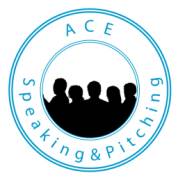Picture this, you’re standing in front of a room filled with eager faces, waiting to hear what you have to say. Your presentation slides are set, your content is well-prepared, but now comes the critical moment—the opening. How do you grab and hold your audience’s attention from the very beginning? Let’s look at some effective strategies that will help you captivate your audience right from the start of your presentation.
- Craft an Engaging Hook: Just as a captivating book begins with an intriguing opening line, a presentation should start with a hook that sparks curiosity. This could be a surprising fact, a thought-provoking question, a relevant anecdote, or even a compelling quote. Your hook should connect with your topic and make your audience sit up and take notice.
- Tell a Story: Human beings are hardwired to respond to stories. Narratives have the power to transport your audience into a different world, engaging their emotions and imagination. Share a personal story, a case study, or a hypothetical scenario that relates to your topic. Weave in relatable characters, challenges, and resolutions to create a compelling storytelling experience.
- Pose a Provocative Question: A well-crafted question can stimulate your audience’s curiosity and encourage them to reflect on your topic. Pose a thought-provoking question that challenges their assumptions or makes them reconsider their perspective. Make sure the question is relevant and relatable to your presentation content.
- Use Visuals Creatively: Visuals are powerful tools for grabbing attention. Start your presentation with an eye-catching image, infographic, or a short video clip that ties into your topic. Visuals not only capture attention but also help to set the tone and context for your presentation.
- State a Bold Statistic or Fact: Numbers can be attention-grabbing, especially if they’re surprising or shocking. Begin your presentation with a statistic or fact that highlights the significance of your topic. Make sure it’s easy to understand and relates directly to the subject matter.
- Share a Relevant Quote: A well-chosen quote can encapsulate the essence of your presentation and resonate with your audience. Find a quote from a respected authority or a notable figure that aligns with your message. Use the quote as a springboard to introduce your topic and its importance.
- Use Humour Wisely: A well-timed joke or humorous anecdote can instantly connect you with your audience. Humour can break the ice and create a positive atmosphere, making your audience more receptive to your message. However, be cautious—humour can be subjective, so ensure your joke is appropriate and relevant to your topic.
- Use Audience Interaction: Engage your audience right from the start by asking them to participate in a quick poll, raise their hands in response to a question, or share their thoughts on a particular topic. This creates a sense of involvement and sets an interactive tone for your presentation.
- Highlight a Common Pain Point: Identify a common challenge or pain point that your audience can relate to. Addressing a problem they’re facing immediately captures their attention and positions you as someone who understands their needs. Hint at a solution or insights that will help alleviate this pain point.
- Demonstrate Enthusiasm: Your passion for the topic is infectious. Show genuine excitement and energy from the moment you step onto the stage. Your enthusiasm will resonate with your audience and encourage them to stay engaged throughout your presentation.
Captivating your audience from the beginning of your presentation is a skill that can be developed with practice and creativity. By employing a combination of hooks, storytelling, visuals, and interaction, you can ensure that your audience remains engaged, attentive, and eager to hear what you have to say. Remember, the opening is your chance to make a memorable first impression, so make it count!

